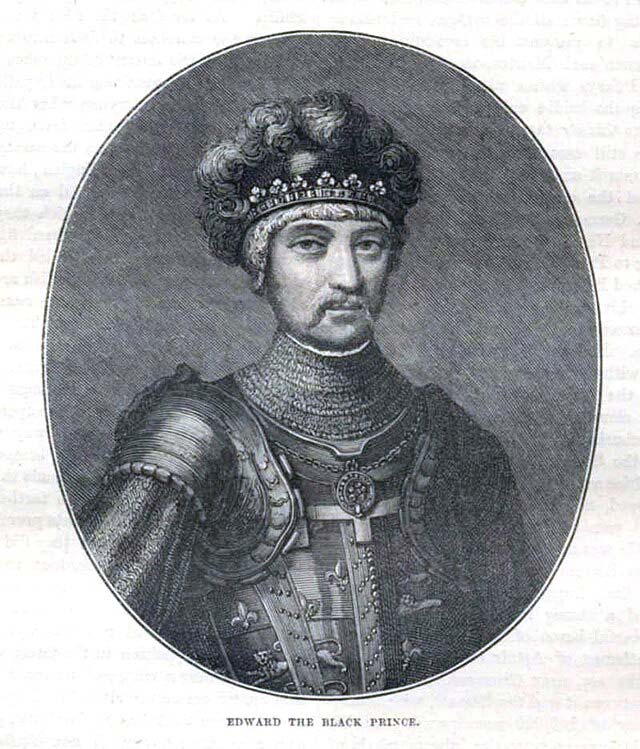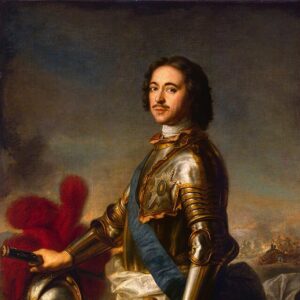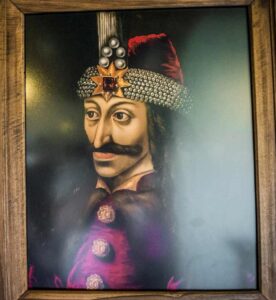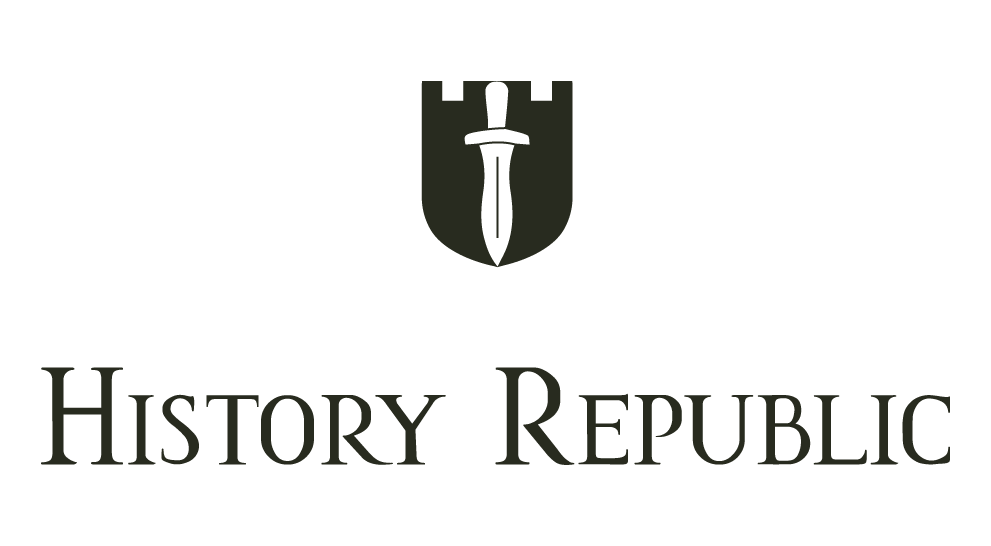History remembers kings who reigned; Edward of Woodstock never did. Yet his name—“the Black Prince”—still rings like iron on stone. He was born into a kingdom recovering from a political nosedive, trained in a household where chivalry was a job description, and hurled into command at sixteen on a French hillside where arrows fell like rain.
In his twenties he captured a crowned enemy, governed a glittering court at Bordeaux, and rode hard enough across the Pyrenees to redraw maps and ledgers alike. Then the edges showed: a costly Spanish adventure, Gascon pushback, a ruthless sack that darkened his legend, and an illness that turned the tireless rider into a careful, fading statesman.
He died before his father and never wore the crown he seemed born to steady—leaving England with a child-king, a harder war, and a question that still nags: what might have changed if he’d lived a year longer? This is the straight-through story of the prince who served more than he ruled, and shaped an age all the same.
England Before Edward The Black Prince
When Edward was born in 1330, England was still catching its breath after a political face-plant. His grandfather, Edward II, had mismanaged barons and battles so badly that he was deposed in 1327. Deposition is more than a constitutional shuffle; it is a bruise that makes everyone flinch. The crown looked shakier than it wanted to look. The great lords had been reminded of their own weight. Trust, that essential grease of medieval government, ran thin.
On the throne sat a teenager, Edward III, who had inherited a royal machine with missing teeth. The good luck in his corner was Philippa of Hainault, his queen—steady in temperament, practical in judgment, and armed with a network of continental ties that would matter later.
Between them they started the dull, decisive work of repair: household finances, patronage that rewarded competence, a judiciary that at least pretended to be predictable, and—most dramatically—military organization. If you were going to fix the crown’s reputation in the 1330s, you did it at home by cleaning the gears and abroad by winning.
France loomed over both those tasks. The English king held the duchy of Aquitaine (Gascony) in southwestern France as a vassal of the French king. That feudal arrangement was a spiderweb: strong enough to hold you when it mattered, delicate enough to break when it didn’t suit. On top of that, Edward III’s mother, Isabella of France, was a daughter of King Philip IV, which gave Edward a claim—contested, but not imaginary—to the French crown.
Whenever a French king tugged at English rights in Gascony, English lawyers waved a genealogy chart and a title claim. Whenever an English king acted like a sovereign in his own duchy, French lawyers waved a feudal contract. Neither argument was new; both would acquire sharp edges.
In 1337, quarrels about homage and jurisdiction and confiscation became something bigger. We call the next century and more the Hundred Years’ War—not a single war, but a long series of campaigns and truces, surges and lulls, shaped by politics, plague, and the lifespan of dukes. One early surge favored England. In 1340, the English navy smashed a French fleet at Sluys. Control of the Channel didn’t just mean safer crossings and supply lines; it meant that English kings could choose when to break the calm and land an army on French soil.
On land, English commanders were refining a way of fighting that played against French expectations: dismounted men-at-arms holding ground, longbowmen harrowing approaches, and counterattacks timed for the moment when weight became wobble. Wrap that discipline in the theater of chivalry, and you had a project: give England victories that made people remember how a king was supposed to feel.
Into that project a child was born.
On the throne sat a teenager, Edward III, who had inherited a royal machine with missing teeth. The good luck in his corner was Philippa of Hainault, his queen—steady in temperament, practical in judgment, and armed with a network of continental ties that would matter later.
Between them they started the dull, decisive work of repair: household finances, patronage that rewarded competence, a judiciary that at least pretended to be predictable, and—most dramatically—military organization. If you were going to fix the crown’s reputation in the 1330s, you did it at home by cleaning the gears and abroad by winning.
France loomed over both those tasks. The English king held the duchy of Aquitaine (Gascony) in southwestern France as a vassal of the French king. That feudal arrangement was a spiderweb: strong enough to hold you when it mattered, delicate enough to break when it didn’t suit. On top of that, Edward III’s mother, Isabella of France, was a daughter of King Philip IV, which gave Edward a claim—contested, but not imaginary—to the French crown.
Whenever a French king tugged at English rights in Gascony, English lawyers waved a genealogy chart and a title claim. Whenever an English king acted like a sovereign in his own duchy, French lawyers waved a feudal contract. Neither argument was new; both would acquire sharp edges.
In 1337, quarrels about homage and jurisdiction and confiscation became something bigger. We call the next century and more the Hundred Years’ War—not a single war, but a long series of campaigns and truces, surges and lulls, shaped by politics, plague, and the lifespan of dukes. One early surge favored England. In 1340, the English navy smashed a French fleet at Sluys. Control of the Channel didn’t just mean safer crossings and supply lines; it meant that English kings could choose when to break the calm and land an army on French soil.
On land, English commanders were refining a way of fighting that played against French expectations: dismounted men-at-arms holding ground, longbowmen harrowing approaches, and counterattacks timed for the moment when weight became wobble. Wrap that discipline in the theater of chivalry, and you had a project: give England victories that made people remember how a king was supposed to feel.
Into that project a child was born.
The Making of a Prince
Edward of Woodstock was born on June 15, 1330, at Woodstock Palace in Oxfordshire. The name the 14th century knew him by—“of Woodstock”—matters. “Black Prince” is a later nickname (we’ll come to it), but “of Woodstock” pins him to a real place and the early English childhood he really had. Royal children in that house were not ornaments; they were future managers, future captains, future symbols.
The boy was quickly wired into the system. He became Earl of Chester in 1333; Duke of Cornwall in 1337—the first dukedom in English history, created to endow the heir with land and revenue; and Prince of Wales in 1343. These were not party favors. Each title loaded him with incomes to learn, tenants to manage, and expectations to meet.
His education mixed the three rooms that mattered in a medieval court: chapel, tiltyard, and counting room. He learned to ride as if a saddle were a second body. He learned lance and sword and dagger—and, crucially, to dismount and fight on foot, because his father’s army was teaching itself to win by standing and waiting, not just by charging.
He learned French, the language of the upper crust; Latin, the language of law and liturgy; and English, which was regaining rank after two centuries of Norman snootiness. He learned to read accounts and charters and people: ceremony was a code, and he was taught to read it fluently.
His mother, Queen Philippa, mattered in daily ways that don’t always make chronicles. She managed a household that ran. She eased tempers. She carried a public reputation for mercy—think of the story (true in spirit if embroidered in detail) of her pleading for the lives of Calais’s burghers. In that world, mercy was not softness; it was a prestige move, and Edward would have seen how it worked.
In 1348, when Edward III founded the Order of the Garter, the prince stood among its first companions. He took as his badge three ostrich feathers and as his motto “Ich dien”—“I serve.” Later generations would embroider a tale that he took the feathers from the fallen John of Bohemia at Crécy, a blind king who died charging into legend. The paperwork is thin; the fit is perfect. “I serve” was not humility for humility’s sake; it was a promise to treat honor as work.
All of this—the languages, the weapons, the etiquette, the motto—reads like a preface. The first chapter arrives when he is sixteen.
The Sixteen-Year-Old Captain
In 1346, Edward III put to sea with an army divided into three “battles,” the big functional chunks of a medieval field force. He gave the vanguard—the forward division—to his son. That assignment alone speaks volumes. You do not hand a third of your army to a child to flatter him. You do it because you want him tested publicly and you think he’ll pass.
On August 26, 1346, near the village of Crécy, the English halted on defensible ground, laid out their line with archers splayed on the flanks like bristling hedgehogs, and planted their men-at-arms on foot to soak up shock. The French attacked in waves. Crossbowmen advanced and were outmatched; cavalry pressed forward and found that courage cannot bend an angle. The prince held his sector through the crisis.
A messenger (if we trust the storytellers) asked the king whether to send aid to the embattled teenager. Edward III’s answer—“Let the boy win his spurs”—may be historical poetry more than transcript, but its sentiment fits what happened. The line held. The French line didn’t. The prince came out of the smoke a soldier with a reputation earned, not loaned.
The aftermath mattered nearly as much as the battle. The English settled down to squeeze Calais. In August 1347, after a long, brutal siege, Calais fell. For England, it was a continental anchor, a safe harbor, a base for future campaigns, and a symbol of staying power. For Edward, it sealed a public image: precocious, capable, lucky in the way that follows preparation.
Then came a silence you could hear—a silence made of the Black Death. In 1348, plague reached England. We measure the death toll in fractions of populations because the numbers are beyond counting. Fields went unharvested. Rents went unpaid. The rhythms of government and war stumbled.
When armies resumed their tramp, they did so with a different heartbeat. Out of the shock, the English perfected the chevauchée, the hard-riding raid designed to live off the land, burn what mattered politically, and force a proud enemy either to fight at a disadvantage or to watch his authority melt into ash and fear.
In 1355, Edward the black prince, now a seasoned twenty-something, rode a classic chevauchée out of Gascony, drawing a wide arc across southern France, in and out before a net could be thrown. The next year he rode again. This time King John II of France managed to close. The armies met near Poitiers on September 19, 1356.
The prince took up a defensive position cloaked by hedges and rolling ground. The French pushed hard. The longbow punished disorder. The English men-at-arms, many on foot, held to their discipline. At the right instant, a counterattack unstitched the pressure.
When the hours of dust and breathless pushing and shattered shields ended, the English held an unimaginable prize: King John II himself was a prisoner, along with a confetti of captives whose ransoms would make treasurers smile and enemies seethe.
Crécy had proved that the English could win with method. Poitiers proved that they could do it again—and convert it into leverage. When Edward brought his royal prisoner to London in 1357, the cheers were not polite. England felt, for a moment, ten feet tall.
The prince’s life widened to fit more than war. In 1361, he married Joan of Kent, the “Fair Maid of Kent” of courtly verse. She was a royal cousin with a complicated marital past, yes, but she was also widely liked, and the union seems to have held real warmth.
In 1362, Edward III gave his son the principality of Aquitaine as a quasi-sovereign command. Edward and Joan set up their court at Bordeaux, and for a handful of years it glittered. Tournaments and pageants are what we picture, but the core was governance: petitions heard, disputes settled, taxes adjusted, favors granted.
If conquest was to be something sturdier than a bonfire, it had to harden into rules that people—especially prickly Gascon lords—could live under. The prince tried to build that.
They had two sons. Edward of Angoulême, born 1365, died in 1371; grief can be a private storm even when you can command trumpets. Richard of Bordeaux, born January 1367, would become Richard II—because his father would not live long enough to wear the crown himself.
Even as he governed, the war kept tugging, and not only from the north. Castile in Spain had erupted. Peter had been driven off his throne by Henry of Trastámara, who had French backing and the genius of Bertrand du Guesclin, a Breton captain who specialized in the kind of war the English least liked.
The prince crossed the Pyrenees and, at Nájera (Navarrete) in April 1367, routed Henry’s forces and restored Peter—for a time. As a feat of arms, Nájera kept the legend bright. As a line item, it was a hole. Peter did not pay like a partner; the campaign had been expensive; and when the prince looked around for funds to patch the budget, he had to turn to Aquitaine.
Taxes followed. Gascon lords who had clapped at tournaments and bowed in halls stiffened when bills came. Some appealed over the prince’s head to Charles V of France, using the hair-fine threads of feudal law to claim that Paris, not Bordeaux, had the right to hear their complaints. Charles V smiled inwardly and accepted. He was building a different kind of French response than the one that had shattered at Poitiers. He and du Guesclin preferred patience to panache—sieges and recoveries, not big battles where English longbows made geometry king. Against such a strategy, you need stamina and smart administration—and a healthy, hands-on leader.
That is what the prince was about to lose.
Illness, Limoges, and the Hard Edges of a Legend
Around 1367, the prince’s health began to fail in ways that didn’t make sense for a man not yet forty. Medieval writers describe episodes: sudden weakness, prolonged fatigue, illness that came and went. The modern guesses include chronic dysentery acquired on campaign and kidney disease; the specifics matter less than the consequences. Edward of Woodstock, who had lived by motion, now had to measure it. He could still act. He could no longer out-ride problems.
In 1370, the city of Limoges, long within the English orbit, shifted allegiance to France. Despite illness, the prince marched to bring it back. The city fell. What followed is the darkest page in his story. Medieval numbers are famously slippery, and later writers would paint the sack with colors that suited their arguments.
But even sober chronicles accept that the aftermath was brutal: civilians died, houses burned, the tone hard and punitive. You can argue about scale. It’s harder to argue about character. Limoges doesn’t erase the virtues of the man; it complicates them.
The same century that loved chivalry accepted, and sometimes demanded, acts that look like atrocities to ours. It is, in a way, a sign of the prince’s size that Limoges clings to his name; we hold the most visible to the sharpest light.
By 1371, illness and the grind of French pressure drove the prince back to England. In 1372, he resigned Aquitaine—public recognition that someone else would have to try to hold what he could no longer personally shore up. That same year, a Franco-Castilian fleet beat the English at La Rochelle, a naval jolt that reminded everyone the wheel had turned. The man who had seemed to solve problems by appearing at the edge of a clearing could not appear as often, or for as long.
Yet he had one more important act left, and it wasn’t martial.
The Last Use of a Famous Name
In 1376, Parliament gathered in Westminster in a mood you could measure in clamped jaws: frustration with taxes for a war that no longer returned triumphs; suspicion of royal favorites; a hunger for some show that power would be answerable. What we now call the Good Parliament pushed for the removal of certain officers and for a cleaning out of the palace corners where the smell of corruption lingered.
The Black Prince, sick but lucid, stood with the reformers. It was a remarkable choice. He could have spent the last ounces of his prestige demanding harder war or silencing critics. Instead he spent it on accountability—on the idea that a king’s counselors could be judged for performance and punished for abuse.
That choice did not remake the constitution overnight. Some of what the Good Parliament achieved would be undone by the Bad Parliament that followed. But the images were made: the realm’s most celebrated captain had stood beside those who insisted that the government sit on something sturdier than habit and favor. In a country that remembers by story, that mattered.
By then, the prince knew what all around him knew: he was dying.
He wrote a will. He chose Canterbury Cathedral for his burial, near the shrine of Thomas Becket. He asked that his battered helm, his shield, his gloves, his surcoat be hung above his tomb. In a world that spoke through symbols, this was a thoughtful last paragraph; he wanted visitors to see what his life had felt like, not only what it had won.
On June 8, 1376, at the Palace of Westminster, Edward of Woodstock died, forty-five years old, eleven months before his father. And with that small twist of timing, a different English history clicked into place.
Because he died first, he never wore the crown. When Edward III died in 1377, the throne passed to the prince’s ten-year-old son, Richard of Bordeaux—crowned Richard II. England exchanged a seasoned, battle-sharp, publicly trusted heir for a child. It’s not Richard’s fault. It is Richard’s problem.
Where Did “Black Prince” Come From?
Contemporaries did not call him the Black Prince. They called him Edward of Woodstock, Prince of Wales, Duke of Cornwall—titles that came with ledgers attached. The label “Black Prince” appears later, probably in the 16th century, and its origin is debated. Three popular explanations take turns in the spotlight:
- Blackened armor: Some later writers imagined his harness “blackened,” either by design or by campaign grime, and the name stuck to the image.
- Dark reputation, especially after Limoges: Historians who want the nickname to be a moral verdict point to the sack and suggest the name’s color matches the deed.
- Tudor storytelling: The 16th century—a great age for retelling medieval tales with new varnish—may simply have minted a label that felt right on the tongue.
There is no single “aha” document. What we can say is that “Black Prince” fits how later England wanted to remember him: crisp, unmistakable, a little severe. It sounds like a banner title, and banners are how people browse the past.
As for the three ostrich feathers and the motto “Ich dien”, tradition says he took them from John of Bohemia at Crécy. The paperwork, again, won’t swear to it, but the continuity says enough: to this day, those feathers and that motto are the insignia of the Prince of Wales. Symbols that are long-lived don’t survive because antiquarians are stubborn; they survive because they still fit the role.
And the Black Prince’s Ruby? It’s not a ruby at all but a big red spinel set in the British Imperial State Crown. Tradition links it to the prince by way of his Spanish adventures. Whether the chain is unbroken doesn’t matter as much as the fact that the name keeps tugging objects and stories into its orbit. That’s what legends do when they’re still at work.
Aftermath and Legacy
What comes after a life like that is twofold: the practical and the permanent.
Practically, his death helped unbalance a delicate situation. Richard II took the throne as a child; John of Gaunt became the adult gravitational force at court; Parliament had tasted both success (the Good Parliament) and frustration (its near-term undoing); France under Charles V kept eating ground a fortress at a time; the sea, after La Rochelle, no longer felt like a private lane.
In 1381, social and economic contradictions burst into the Peasants’ Revolt. Richard quelled it with courage and guile, but the structural problems outlived the speeches. Two decades later, Henry Bolingbroke remade the dynasty.
In each case, a Black Prince alive and sovereign might have been a different weight on the scale. History doesn’t grade possibilities; it records consequences. But even consequences admit that timing matters.
Permanently, he left templates and warnings.
- Templates of war: Choose the ground; trust infantry and archers; buy time with discipline; sell victory with a counterattack that bites, not nibbles. Crécy and Poitiers are still taught because they are still clear.
- Templates of strategy: The chevauchée is not random burning; it is political warfare by movement, designed to make enemies either fight when they shouldn’t or look powerless when they won’t. It works—until a patient enemy refuses the theater.
- Templates of rule: The Bordeaux court proved that pageantry can legitimize policy when the policy is real. People believed the show because the show delivered justice and order.
- Templates of accountability: The Good Parliament stands because a national hero stood with it. England’s constitutional spine grows by layers; his name is one of them.
- Warnings: Limoges won’t wash away. It keeps the word “chivalry” from floating off into costume. It puts a stiffened edge on admiration. It demands an adult reading of medieval war: brilliant and brutal can be the same man.
And the symbols carry on: the feathers and “Ich dien” still live on the badge of the Prince of Wales; a red spinel nicknamed the Black Prince’s Ruby still catches light in a crown. You don’t get that kind of persistence unless the story that carries the symbols still feels useful.
Edward’s does. It says: courage is a skill, not just an impulse; waiting is a weapon; glory that can’t become law is a bonfire; and prestige, hoarded, shines dimmer than prestige spent well at the end.
Which brings us back to Canterbury. If you stand before the effigy and look up at the worn surcoat and the dented helm, the moral of the story is hanging in front of you—literally. He asked for those objects to be there. He wanted strangers from centuries he couldn’t imagine to understand what he thought a prince was for.
The motto on his badge says it without frills: Ich dien—I serve.
For a boy who held a line at sixteen, a man who captured a king at twenty-six, a governor who tried to turn fire into law, a patient invalid who backed reform, and a corpse that changed a succession by dying a year too soon, that is a fair epitaph and a useful instruction.





